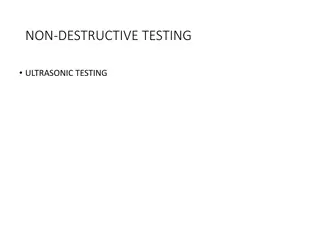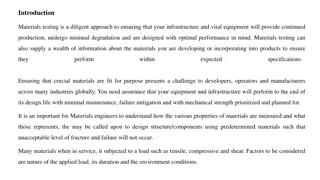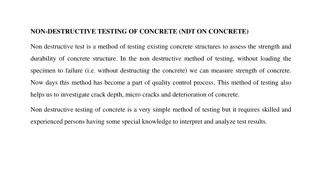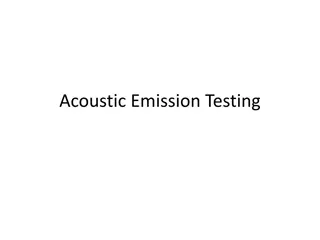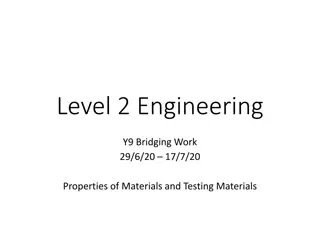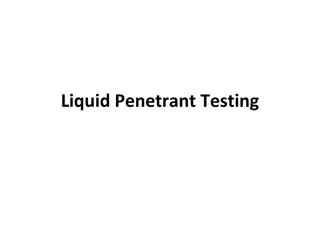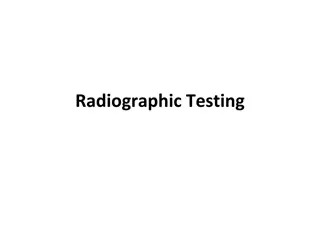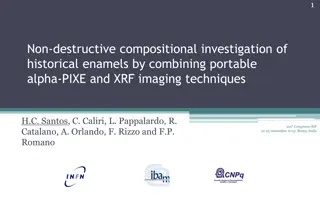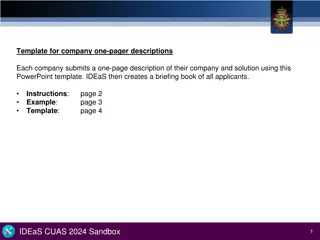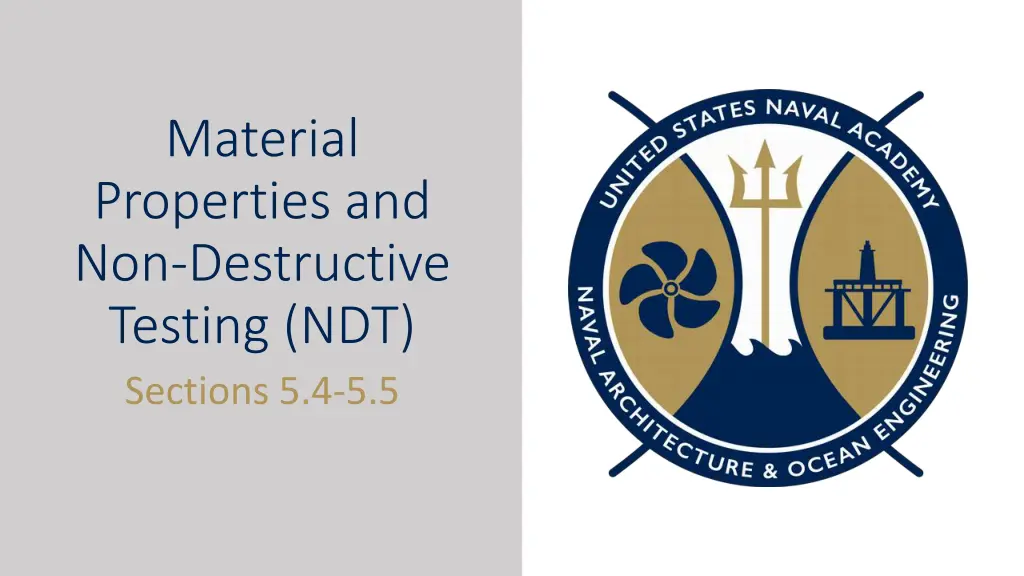
Understanding Material Properties and NDT
Explore the characteristics of materials, including strength, hardness, ductility, brittleness, and toughness. Learn about the relationship between these properties and how they are measured. Discover the comparison of hardness for various materials and the significance of stress vs. strain curves for brittle and ductile materials.
Download Presentation

Please find below an Image/Link to download the presentation.
The content on the website is provided AS IS for your information and personal use only. It may not be sold, licensed, or shared on other websites without obtaining consent from the author. If you encounter any issues during the download, it is possible that the publisher has removed the file from their server.
You are allowed to download the files provided on this website for personal or commercial use, subject to the condition that they are used lawfully. All files are the property of their respective owners.
The content on the website is provided AS IS for your information and personal use only. It may not be sold, licensed, or shared on other websites without obtaining consent from the author.
E N D
Presentation Transcript
Material Properties and Non-Destructive Testing (NDT) Sections 5.4-5.5
Characteristics of a Material Strength Hardness Ductility Brittleness Toughness
Material Properties Strength: Measure of the material property to resist deformation and to maintain its shape It is quantified in terms of yield stress ( y) ultimate tensile strength ( uts) High carbon steels and metal alloys have higher strength than pure metals. Ceramics also exhibit high strength characteristics.
Material Properties Hardness: Measure of the material property to resist indentation, abrasion and wear. It is quantified by hardness scale such as Rockwell and Brinell hardness scale that measure indentation / penetration under a load. Hardness and Strength correlate well because both properties are related to inter-molecular bonding. A high-strength material is typically resistant to wear and abrasion.
Material Properties Material A comparison of hardness of some typical materials: Brinell Hardness Pure Aluminum 15 Pure Copper 35 Mild Steel 120 304 Stainless Steel 250 Hardened Tool Steel 650/700 Hard Chromium Plate 1000 Chromium Carbide 1200 Tungsten Carbide 1400 Titanium Carbide 2400 Diamond 8000 Sand 1000
Material Properties Ductility: Measure of the material property to deform under tensile stress before failure. (Malleability for compressive stress) It is quantified by reading the value of strain at the fracture point on the stress strain curve. Ductile materials can be pulled or drawn into pipes, wire, and other structural shapes Examples of ductile material: Low Carbon Steel Aluminum Copper Brass
Material Properties Brittleness: Measure of the material s inability to deform before failure. The opposite of ductility. Example of brittle material: Glass High Carbon Steel Ceramics
Material Properties Evaluating the Stress v. Strain Curve for Brittle vs. Ductile Brittle Ductile Strain
Material Properties Toughness: Measure of the material ability to absorb energy. It is measured by two methods: 1) Integration of Stress Strain Curve (Material Toughness) Slow absorption of energy Absorbed energy per unit volume unit : ?? 2) Charpy V-Notch Test (Impact Toughness) Ability to absorb energy of an impact without fracturing. Impact toughness can be measured. ??2 ?? ??=?? ?? ??3
Charpy V-Notch Test Charpy test is an impact toughness measurement test because the energy is absorbed by the specimen very rapidly. The potential energy of the pendulum before and after impact can be calculated from the initial and final location of the pendulum. The potential energy difference is the energy it took to break the material absorbed during the impact. Purpose is to evaluate the impact toughness as a function of temperature Demonstrated in Lab #6
Charpy V-Notch Test At low temperature, where the material is brittle and not strong, little energy is required to fracture the material. At high temperature, where the material is more ductile and stronger, greater energy is required to fracture the material. The transition temperature is the boundary between brittle and ductile behavior The transition temperature is an extremely important parameter in selection of construction material.
Charpy V-Notch Test High Carbon Steel Stainless Steel
Material Properties Fatigue: The repeated application of stress typically produced by an oscillating load such as vibration. Sources of ship vibration are engine, propeller and waves. MAXIMUM stress decreases as the number of loading cycles increases. Endurance Limit: A certain threshold stress which will not cause the fatigue failure for the number of cycles. Steel Aluminum Aluminum has no endurance limit Cycles N at Fatigue Failure
Factors Affecting Material Properties Temperature : Increasing temperature will: Decrease Modulus of Elasticity (As Long as Structure Does Not Change) Decrease Yield Strength Decrease Ultimate Tensile Strength Decrease Hardness Increase Ductility Decrease Brittleness Environment: Sulfites, Chlorine, Oxygen in water, Radiation, Pressure
Ways to Alter Material Properties Alloying (Adding other elements to alter the molecular properties): Steel: Carbon, chromium, molybdenum, nickel, tungsten, manganese Aluminum: Copper, manganese, silicon, zinc, magnesium
Ways to Alter Material Properties Thermal Treatments (Application of Heat Over Varying Time): 1. Annealing: Heating higher than its critical temperature then cooling slowly. Improves hardness, strength, and ductility. Steel of Ship s hulls are annealed. 2. Hardening: Heating higher than its critical temperature then cooling rapidly. Improves hardness. Increases internal stresses, may cause cracking. Horseshoes, armor plates 3. Tempering: Steel is heated below the critical temperature and cooled slowly. Used with hardening to reduce the internal stresses. Makes easier to weld Razor blades
Ways to Alter Material Properties Thermal Treatments (Application of Heat Over Varying Time): 4. Hot-Working: Forming of shapes while material is hot. Less internal stresses due to annealing (change in the molecular structure). Blacksmith work 5. Cold-Working: Forming shapes while material is cold. Causes internal stresses, resulting in a stronger shape. Rolling, bending sheet metals. Limited by size. Vehicle parts
Corrosion & Corrosion Protection Corrosion - the destruction of metals due to oxidation or other chemical reactions. Do no want dissimilar metal contact galvanic corrosion Corrosion Protection: 1. Design to eliminate conditions favorable to corrosion 2. Paint, Enamels 3. Cathodic Protection Charging the metal to slow/ stop reaction with other elements Providing a sacrificial metal to give up ions instead of the structure giving up ions (and corroding) Zincs Anodes
Non-Destructive Testing (NDT)
Non-Destructive Testing (NDT) Three Main Types of NDT in Naval Architecture: 1. Surface/Subsurface Inspections for material defects External and Internal Tests Often associated with welling or brazing. Also used to assess thickness of materials. 2. Hydrostatic 3. Weight Test
Non-Destructive Testing (NDT) External Tests
NDT External Tests Visual Test (VT) Naked Eye or Optical Inspection. Always done before other NDT s. Often only NDT required. Very Common JO task Carbon steel corrosion inspection Liquid (Dye) Penetrant Test (PT) A liquid penetrant and developer are applied to the test item surface, causing a color change where surface cracks or flaw exist. Magnetic Particle Testing (MT) The test item is magnetized, then metal particles are applied to the inspection surface. The particles will line up along a surface or near surface crack/flaw giving a visual indication of size and location.
NDT External Dye Penetrant Test (PT) For ferrous and non-ferrous material. Used on most welded joints. Followed by radiographic test if required.
NDT External Magnetic Particle Test (MT) Method that can be used to find surface and near surface flaws in ferromagnetic materials such as steel and iron. The technique uses the principle that magnetic fields (flux) will be distorted by the presence of a flaw. For ferrous material only. Used on most structural welds. Followed by radiographic test if required.
Non-Destructive Testing (NDT) Internal Tests
NDT Internal Tests Ultrasonic Testing (UT) A transducer sends ultrasonic waves into the material. Time and distance is displayed on the oscilloscope. Reads material thickness. Identifies bonding in silver brazes. Shows shear wave for flaws in plates. Radiographic Testing (RT) Uses X-ray or gamma ray to record a permanent image on file or a photo-reactive plate for interpretation. Detects flaws, breaks, or gaps in materials. Impact to ship lots of coordination to complete Eddy Current Testing (ET) Uses magnetic ultra sound to produce eddy currents in a material to detect surface cracks. Results displayed on oscilloscope. Used only for acceptance, not for final rejection.
NDT Internal Ultrasonic Test (UT) Can be used on all metals and nonmetals. Excellent technique for detecting deep flaws in tubing, rods, adhesive-joined joints. It is used on aircraft to detect structural cracks. Needs trained technician to interpret the results.
NDT Internal Radiographic Test (RT) Requires trained technicians. May have large effect on ship access and watchstanding. Integrity of welding for the 2.5mm thick steel plate
NDT Internal Eddy Current Test (ET) Detects cracks on both ferromagnetic and non-ferromagnetic materials. If rejected, verification required by: Magnetic Particle Test for ferrous materials. Liquid Penetrant Test for non-ferrous materials.
Non-Destructive Testing (NDT) Hydrostatic Testing
NDT Hydrostatic Testing Fluid systems are hydrostatically tested during initial construction, and subsequent to repairs, modifications, and component replacement; to verify the leak tightness of the system. Operational pressure tests are performed periodically to determine leak tightness of system mechanical joints. Operational pressure tests are also performed instead of hydrostatic tests, when the criteria for the Operating Pressure Test Option are met. The basic purpose of all such tests is to ascertain that the system can perform its intended function safely and reliably.
NDT Hydrostatic Testing Generally, the sequence for testing is: 1. Establish required prerequisites and initial conditions. 2. Align the system for testing. 3. Pressurize the system slowly and incrementally. 4. Check for leaks at normal operating pressure and two lower incremental pressures. 5. Continue to increase pressure to hydrostatic test pressure. 6. Perform required inspections. 7. Depressurize, remove temporary equipment, and restore the system to the conditions required for subsequent evolutions. The criterion for an acceptable hydrostatic test is there shall be no leakage or permanent deformation of pressure-containing parts, as determined by visual examination, except: The leakage does not become hazardous to personnel. The leakage can be adequately contained to protect equipment. The leakage is within the capacity of the hydrostatic test pump to maintain pressure throughout the test.
Non-Destructive Testing (NDT) Weight Testing
NDT Weight Testing Purpose is to test weight handling equipment Applicable to all weight handling equipment Examples of weight handling equipment: Ordnance Handling Equipment Underway Replenishment Equipment Shipboard Stores and Provision Handling Equipment Hull Fittings, Lashing Gear, and Access Closures Hoist, Chain Falls, Hook and Trolley Suspensions Cranes, Davits, Booms Wire and Fiber Rope and Rigging Strongbacks, Shackles, Blocks, Yokes, Straps, and Slings Elevators
NDT Weight Testing General Procedure (Correct all deficiencies prior to going on to the next step) 1. Pre-Test Inspection Visual Inspection Foundations, Mounts, Controls, Rigging, Couples, Safeties, Hydraulics, Motors, Pumps, etc Operational Test Check Operating Parameters, Leaks, Safety Shutdowns, etc 2. No-Load Test Look for Damage, Operating Temperatures, and Brake Adjustment 3. Rated Load Test Ensure equipment operates at rated conditions without overheating or other failures 4. Static Load Test Checks for safeties at conditions above rated load Structural Integrity, Brakes, Ratchet and Pawls Do not use equipment being tested to lift the static overload Typical test is 150-220% of rated load for 10 minutes. 5. Dynamic Overload Test Test ability of equipment to operate with overload. Typically test if ~125-150% of rated load. Note: Above values are for pier side testing. If at sea the requirements for the static and dynamic testing are reduced, however the rated load is also reduced.

